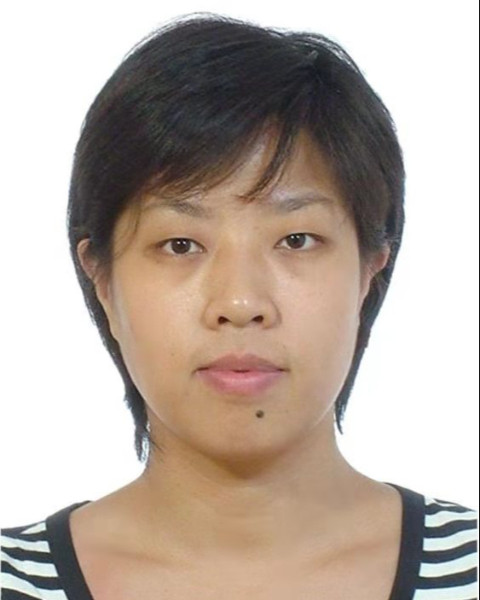PQA 02 - PQA 02 Physics Poster Q&A
2420 - Fully Automated Online Adaptive Radiotherapy Decision Making for Cervical Cancer Using Artificial Intelligence
Sunday, September 29, 2024
4:45 PM - 6:00 PM ET
Location: Hall C
Screen: 4

Shuai Sun, MD, PhD
Peking Union Medical College Hospital
Beijing, Beijing
Presenter(s)
S. Sun1, Y. Liang1, S. Cheng2, R. Cao2, S. He3, B. Yang1, J. Qiu1, K. Hu1, and F. Zhang1; 1Department of Radiation Oncology, Peking Union Medical College Hospital, Chinese Academy of Medical Sciences & Peking Union Medical College, Beijing, China, 2Shanghai United Imaging Healthcare Co., Ltd, Shanghai, China, 3United Imaging Research Institute of Intelligent Imaging, Beijing, China
Purpose/Objective(s): Cervical cancer patients exihibit both stochastic and progressive inter-fraction variations during radiotherapy thus can benefit from online adaptive radiotherapy in case of significant anatomic changes. Currently, the decision of whether online adaptation should be performed is made by physician based on subjective review of daily images, which is inefficient and limited to inter-observer variation. The purpose of this study is to investigate the feasibility of artificial intelligence based decision making for cervical cancer online adaptive radiotherapy. Materials/
Methods: 385 fractions from 15 cervical cancer patients who were treated on an fan-beam CT(FBCT) guided linac were retrospectively studied. At each fraction, a daily FBCT image set was acquired and registered to the planning CT. A senior physician reviewed the registered images and labelled the fraction as adaptive or non-adaptive depending on observed anatomic changes. A support vector machine (SVM) classifier and a Siamese deep learning network (DL) were used to predict the physician decision label, respectively. Both image sets, target and organ at risk (OAR) masks on the planning CT, and OAR masks auto-segmented on the daily FBCT were used as input. For the SVM method, radiomics and morphological features were extracted and then selected using t-test, correlation analysis and the Least Absolute Shrinkage and Selection Operator (LASSO) method. Then the selected features were used for classification. For the DL method, images and masks from the planning CT and daily FBCT were directly fed into the two identical sub-networks with shared weights for feature extraction. Then the output of the sub-networks was joined and the final output was generated via two Fully Connected Layers followed by a LogSoftmax function. The performance of both models was evaluated by accuracy test and area under curve (AUC).
Results: According to the physician label, the numbers of adaptive and non-adaptive fractions were 197 and 188, respectively. For the SVM method, 25 radiomics and morphological features were selected from 71 extracted features. Using 5-fold cross validation, the AUC value achieved by SVM was 0.90, and the corresponding accuracy, precision, and recall were 0.83, 0.83, 0.83 respectively; the AUC value achieved by DL was 0.94, and the corresponding accuracy, precision, and recall were were 0.91, 0.93, and 0.89 respectively.
Conclusion: Both SVM and DL models could accurately predict the physician decision for cervical cancer online adaptive radiotherapy. Since the proposed method doesnt need physician modified daily contours as input, it could be integrated into clinical workflow as a fully automated tool, predicting the need for online adaptation after the daily image set is acquired. It can be used to reduce the review time spent by physicians or to aid the radiotherapy technician (RTT) in an RTT-only workflow.
Purpose/Objective(s): Cervical cancer patients exihibit both stochastic and progressive inter-fraction variations during radiotherapy thus can benefit from online adaptive radiotherapy in case of significant anatomic changes. Currently, the decision of whether online adaptation should be performed is made by physician based on subjective review of daily images, which is inefficient and limited to inter-observer variation. The purpose of this study is to investigate the feasibility of artificial intelligence based decision making for cervical cancer online adaptive radiotherapy. Materials/
Methods: 385 fractions from 15 cervical cancer patients who were treated on an fan-beam CT(FBCT) guided linac were retrospectively studied. At each fraction, a daily FBCT image set was acquired and registered to the planning CT. A senior physician reviewed the registered images and labelled the fraction as adaptive or non-adaptive depending on observed anatomic changes. A support vector machine (SVM) classifier and a Siamese deep learning network (DL) were used to predict the physician decision label, respectively. Both image sets, target and organ at risk (OAR) masks on the planning CT, and OAR masks auto-segmented on the daily FBCT were used as input. For the SVM method, radiomics and morphological features were extracted and then selected using t-test, correlation analysis and the Least Absolute Shrinkage and Selection Operator (LASSO) method. Then the selected features were used for classification. For the DL method, images and masks from the planning CT and daily FBCT were directly fed into the two identical sub-networks with shared weights for feature extraction. Then the output of the sub-networks was joined and the final output was generated via two Fully Connected Layers followed by a LogSoftmax function. The performance of both models was evaluated by accuracy test and area under curve (AUC).
Results: According to the physician label, the numbers of adaptive and non-adaptive fractions were 197 and 188, respectively. For the SVM method, 25 radiomics and morphological features were selected from 71 extracted features. Using 5-fold cross validation, the AUC value achieved by SVM was 0.90, and the corresponding accuracy, precision, and recall were 0.83, 0.83, 0.83 respectively; the AUC value achieved by DL was 0.94, and the corresponding accuracy, precision, and recall were were 0.91, 0.93, and 0.89 respectively.
Conclusion: Both SVM and DL models could accurately predict the physician decision for cervical cancer online adaptive radiotherapy. Since the proposed method doesnt need physician modified daily contours as input, it could be integrated into clinical workflow as a fully automated tool, predicting the need for online adaptation after the daily image set is acquired. It can be used to reduce the review time spent by physicians or to aid the radiotherapy technician (RTT) in an RTT-only workflow.
